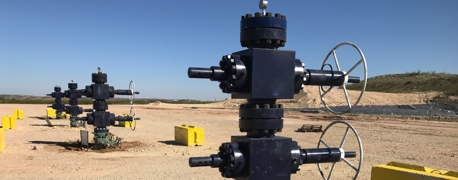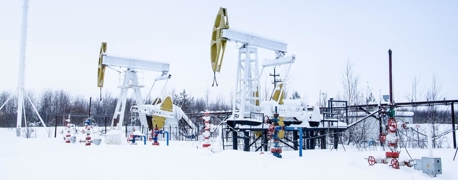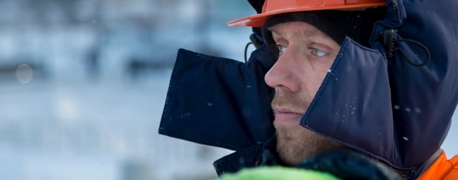What Does a Floorhand Do on a Rig?

The oil and gas industry is a complex and challenging field, and at the heart of its operations are the diligent workers who ensure the smooth running of drilling rigs. Among these critical roles is that of the floorhand, a position that is as demanding as it is essential. In this blog, we'll explore the intricacies of what a floorhand does, the risks involved, and the pivotal role they play in the safety and productivity of oil rig operations.
Responsibilities & Challenges of a Floorhand
A floorhand, often known as a "roughneck," is a crew member on a oil rig, responsible for various tasks that keep the rig functioning efficiently. These tasks include handling drilling equipment, maintaining the rig, and assisting in the assembly of pipes and drill stems. The job requires physical strength, as it involves heavy lifting, and agility to move quickly and safely around the rig.
One of the most significant aspects of a floorhand's job is the inherent risk involved. Working with heavy machinery and in potentially hazardous environments, floorhands are exposed to risks like slips, trips, falls, and injuries from handling equipment. High-pressure lines, combustible materials, and extreme weather conditions, especially on offshore rigs, add to the occupational hazards.
Land or Sea: Varied Work Environments
Floorhands are employed in both onshore and offshore rigs. While the core responsibilities of floorhands on both land and offshore rigs are similar, the conditions under which they work vary significantly, leading to differences in their daily routines, required skills, and safety protocols.
Land Rig Floorhands
On land rigs, floorhands work in a variety of environments, from deserts to arctic conditions. Although many land rigs are in remote locations, the accessibility of these rigs allows for a more straightforward logistics and support network when compared to offshore. Land rig floorhands deal with the assembly and disassembly of drilling pipes, maintenance of drilling equipment, and general deck operations under the guidance of more experienced crew members. The risks here include dealing with machinery, potential for slips and falls, and exposure to harsh weather conditions.
Offshore Rig Floorhands
Offshore floorhands face additional challenges due to the isolated and confined nature of their work environment. The complexity of operations on offshore rigs is higher, given the sophisticated equipment and the need to drill under the seabed. Offshore workers undergo rigorous safety and survival training, including sea survival and helicopter evacuation procedures. The isolation also requires a greater emphasis on mental health and teamwork, as the crew lives in close quarters for extended periods.
The Heart of Safety & Production
A floorhand’s role is crucial in maintaining the safety and efficiency of rig operations. Their responsibilities include ensuring that equipment is functioning correctly, following safety protocols, and responding to emergencies. Proper execution of their duties directly impacts the rig's overall safety and productivity.
The consequences of a floorhand failing to perform their duties adequately can be significant. Mistakes can lead to equipment failures, accidents, environmental hazards, and even catastrophic events like blowouts or fires. Thus, the precision and attention to detail in a floorhand's work are paramount.
Not all floorhands are at the same level. There's a hierarchy within the role, with senior floorhands taking on more complex tasks and mentoring newcomers. They work closely with other positions like mud logging technicians, derrickhands, and motorhands, forming an integral part of the rig's crew.
Common Injuries Faced by Floorhands on an Oil Rig
The oil and gas industry is known for its high-risk environment, where the potential for serious injury is a constant presence. Floorhands, with their hands-on role in the operation of oil rigs, are particularly exposed to a variety of hazards that can lead to accidents and injuries. Understanding these risks is crucial for implementing effective safety measures and training programs.
- Fires and Explosions: One of the most severe risks on oil rigs comes from fires and explosions, which can result from the ignition of flammable gases or liquids. These incidents can lead to burns, inhalation injuries, and even fatalities, emphasizing the need for strict adherence to safety procedures and emergency response protocols.
- Slip and Fall Accidents: The oil rig environment is prone to slippery surfaces, whether from oil, water, or other substances. Slip and fall accidents can lead to a range of injuries, from minor bruises to serious fractures, head injuries, or spinal damage. Ensuring that walkways are clean and that anti-slip measures are in place is vital for prevention.
- Toxic Chemical Leaks: Exposure to toxic chemicals, either through leaks or during handling, can cause burns, respiratory issues, and long-term health effects. Proper handling, storage, and emergency response to hazardous materials are critical in protecting floorhands from these risks.
- Drilling Blowouts: A blowout occurs when control over the well is lost, allowing oil or gas to escape at high pressure. These events can lead to fires, explosions, and direct injury from the force of the escaping fluids. Rigorous well control practices and blowout preventer systems are essential safeguards.
- Equipment Malfunctions: The malfunction of drilling equipment can result in crush injuries, lacerations, and amputations. Regular maintenance and safety checks, along with proper training in equipment operation, are key to minimizing these risks.
- Electrocutions: Working with electrical equipment in potentially wet conditions or in environments where flammable gases may be present increases the risk of electrocution. Electrical safety training and equipment grounding are crucial preventive measures.
- Oil or Gas Leaks: Leaks can lead to fire hazards, explosions, and health issues from inhalation. Monitoring systems and quick response strategies are necessary to address leaks promptly.
- Falling Objects: Tools or materials dropped from a height can cause severe injuries, including head trauma. Wearing safety helmets and securing tools properly can mitigate these dangers.
- Falling From a Height: Falls from ladders, platforms, or other elevated positions can result in serious injuries or fatalities. Fall protection systems and training are essential for workers at a height.
- Hydraulic Machinery Malfunctions: Failures in hydraulic systems can lead to sudden releases of energy, causing injuries from flying debris or machinery movement. Regular inspection and maintenance of hydraulic systems help prevent these accidents.
- Breaks or Snapbacks of Lines: The sudden break or snapback of drilling lines or cables can whip objects through the air, posing significant risk to nearby workers. Ensuring proper line integrity and maintaining clear zones around potential snapback areas are important safety measures.
- Motor Vehicle, Boating, or Helicopter Accidents: Commuting to remote oil rigs via road, boat, or helicopter introduces transportation-related risks. Adhering to vehicle safety protocols and emergency procedures is vital for reducing the likelihood of accidents during transit.
The role of a floorhand on a rig is a testament to the resilience and dedication required in the oil and gas industry. It's a position that demands physical stamina, a commitment to safety, and the ability to work effectively under pressure. As the industry evolves, so too will the role of the floorhand, adapting to new technologies and changing safety standards. However, their fundamental contribution to the heart of rig operations will undoubtedly remain critical.


